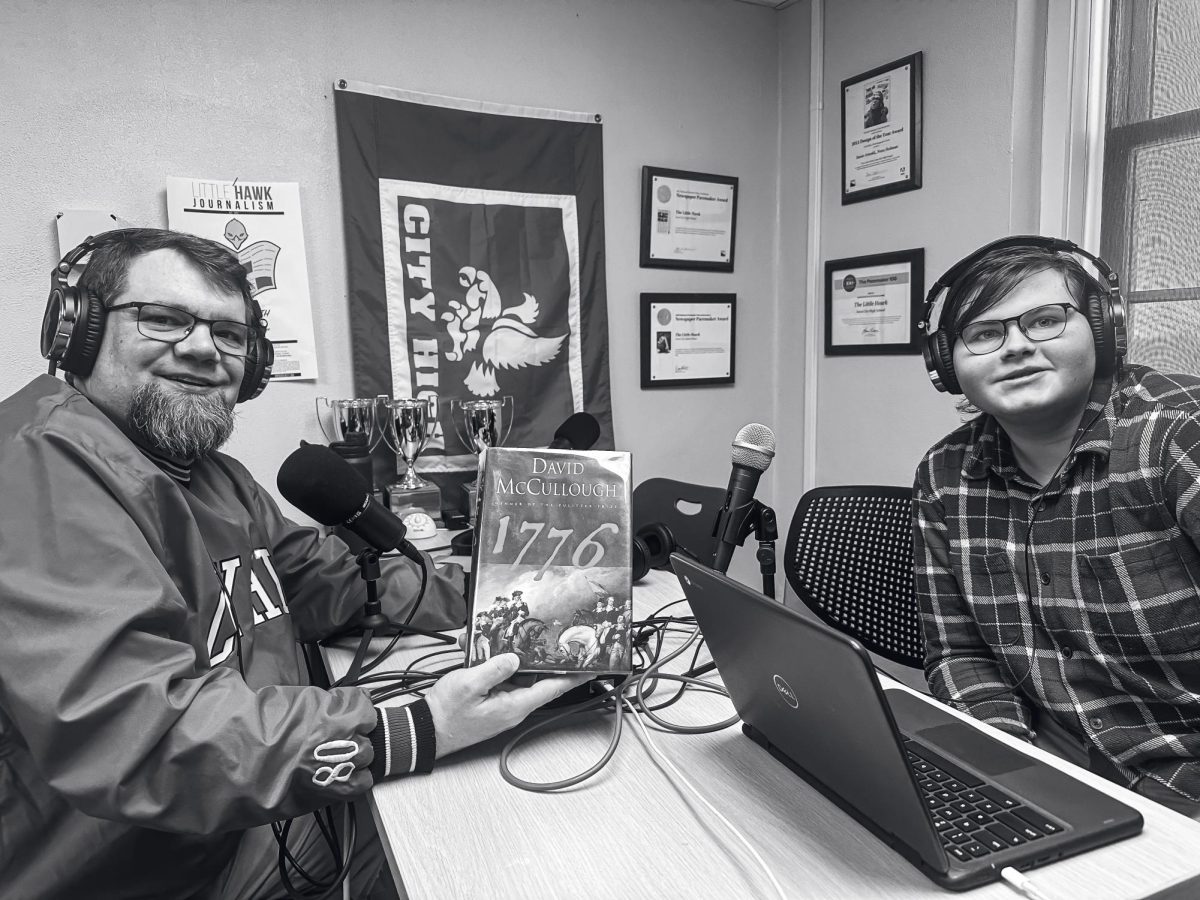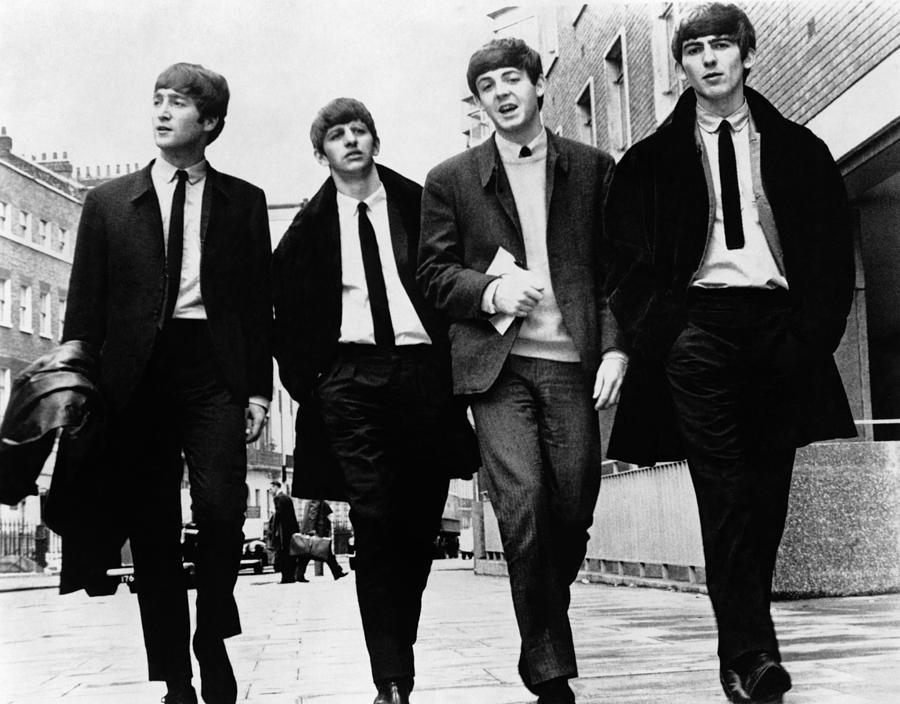One If By Land, Four If By Ed Sullivan
A look back on the 50 years in music since the band’s U.S debut.
February 14, 2014
The screams are deafening as the four young, mop-top Brits step off the plane. Shrill shrieks fill the ears of the young musicians, and the realization dawns on them that the host of young girls are there for them. The scene is destined to become the reference of every celebrity stepping into hordes of young, adoring fans. They’ll all say that they felt “just like the Beatles.”
The British Invasion that started with the appearance of the band on the Ed Sullivan Show altered the course of music history. Rock groups influenced by American Blues artists like Buddy Guy, Muddy Waters, and B.B. King came storming into the U.S. Bands like The Rolling Stones and The Who were soon to follow. These new groups influenced American artists like Jim Morrison and Jerry Garcia, who formed The Doors and The Grateful Dead. Back in Britain, bands like The Yardbirds were sprouting up as part of this new genre.
The radio waves of the U.S. and Britain were coursing with the sounds of the Fab Four, as the Beatles put out #1 tracks like a factory, and songs like “Yesterday” staying at #1 for weeks at a time. This was only the beginning of several years of dominating the radio and the spotlight. “Yesterday” alone has been covered more than 2,200 times.
After the explosive release of Jimi Hendrix’s album Are You Experienced? rock as a genre became harder, louder, and less innocent. The Beatles sought to lose the mop-top, pop-singer image they had created for something a little more serious. This showed in their music, as their albums began to deviate heavily from the rather innocent pop songs of their early years. The album Rubber Soul embodied this new direction, and is one of the most critically acclaimed albums released by the band.
After this, the band members took to a retreat to India for courses in meditation, to help with their song writing. While all of four eventually quit these courses, the trip had a major influence on their music. Several tracks released after the trip feature the sitar and other Indian instruments.
Upon their return to the U.K. the band began work on one of their most ambitious albums, titled The Beatles, but more commonly known as The White Album. The album featured quiet, poetic compositions such as “Blackbird” as well as songs more heavily inlaid with affectations. The song “While My Guitar Gently Weeps,” which featured Cream’s guitarist Eric Clapton playing lead guitar, as a favor for his friend George Harrison. The song “Helter Skelter” was a far harder rock song than most of what the band had released prior, and consequently inspired serial killer Charles Manson.
The Beatles were not without their own share of controversy. A passing comment made by John Lennon the The Beatles had become “bigger than the Bible” sparked outrage across the Bible Belt in the southern U.S. as well as a severe reprimand from the Pope (Which was only recently retracted). This resulted in mass-burnings of Beatles albums and merchandise in these regions, and seriously affected the band’s popularity parts of the U.S.
Around this time, the band formed Apple Records Co. This was directly after the death of the band’s manager and close friend Brian Epstein, who was often referred to as the ‘fifth Beatle.’ The first major project released under the new label was the film Magical Mystery Tour, the band’s first film. When it aired in the U.K. it received scathing criticism. McCartney, when asked about it said “it was our first try. If we goofed, we goofed.”
By now, the band’s final two albums, Abbey Road and Let It Be, were in the making. Tension between the band members had been brewing after Epstein’s death, and the making of these albums was filled with creative stand-offs, disagreements, and the presence of John Lennon’s new wife, Yoko Ono, who had frequent arguments with the other members of the band. Shortly after the release of Let It Be, the band dissolved. But even this could not change that The Beatles had forever changed music, and artists well into modern times draw heavily from the styles and music of the Fab Four. They will be remembered and celebrated for years to come as the greatest collaboration of musical talent in their generation.































